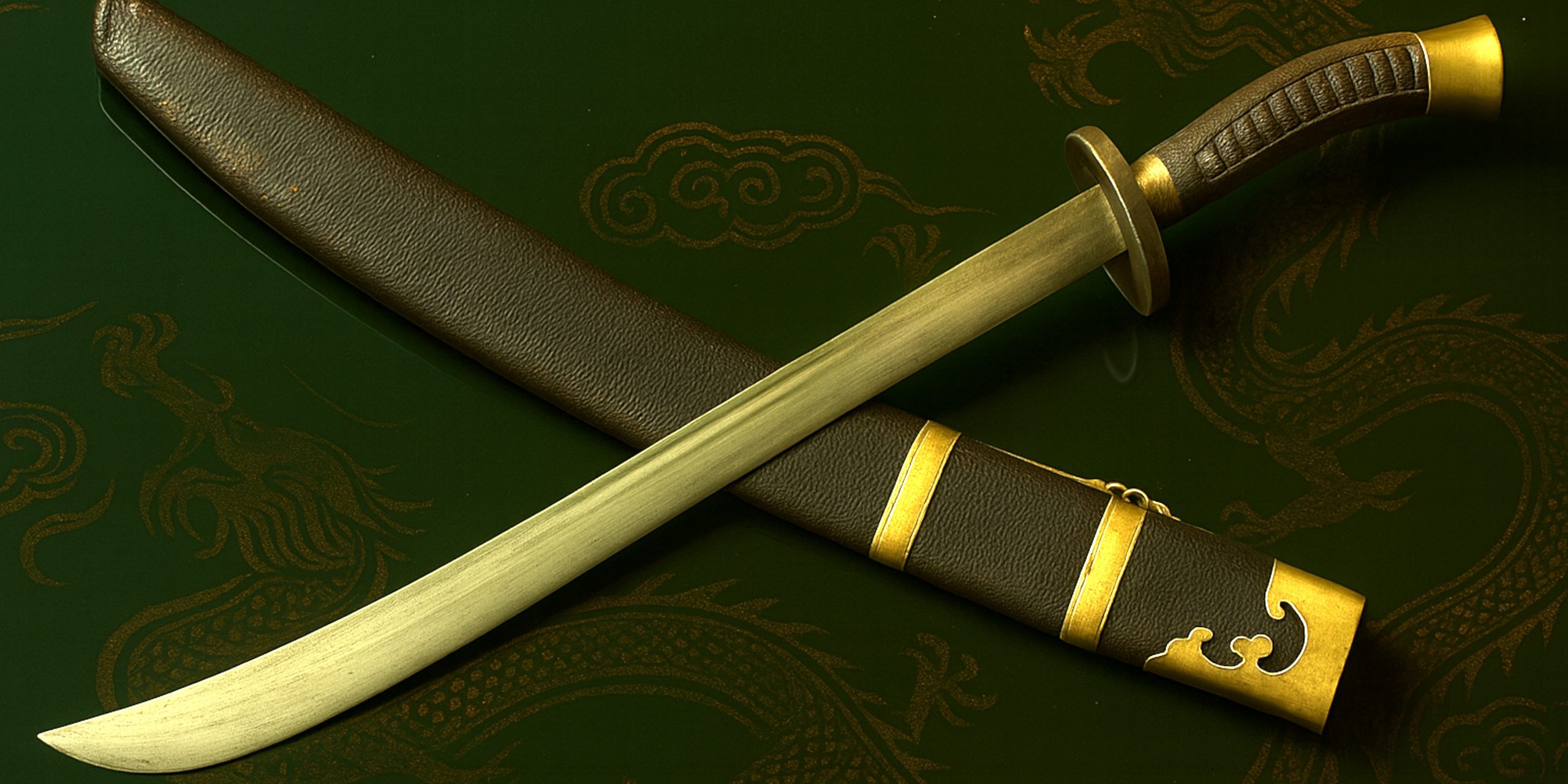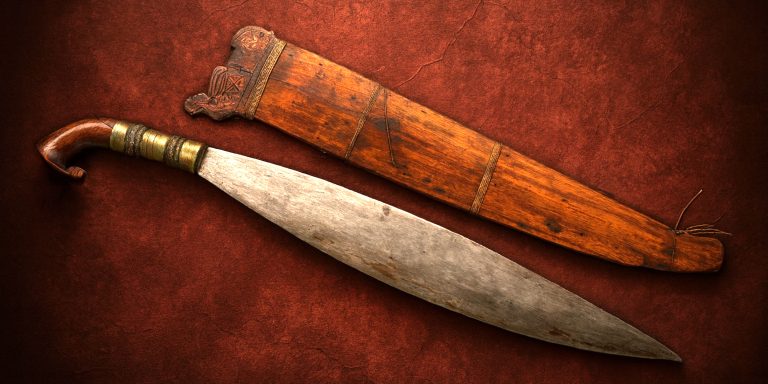
The niuweidao, often called the oxtail saber, is a civilian Chinese saber from the late Qing dynasty. Its defining feature is a blade that narrows at the base and fans out toward the tip, giving it a heavier distal profile that enhances cutting power. Though iconic in martial arts films, this style was seldom part of formal military issue.
Specifications
Historical examples vary, but averages include:
- Blade length near 76 cm (30 inches), weighing around 900 g.
- Blade flares out near the point of impact, up to roughly 42 mm near the tip in some reproductions.
- Modern replicas often use spring steel hardened to around 54–55 HRC.
History and Evolution
Emerging in the mid‑19th century, the niuweidao reflected a shift in Chinese combat. As firearms became more widespread, the need for heavy cavalry sabers declined. Civilians, militia, and martial artists adopted this design for its cutting effectiveness against unarmoured opponents. It remained largely an informal weapon rather than an official military issue.
Advantages and Disadvantages
| Strengths | Limitations |
|---|---|
| Heavy distal weight boosts slashing power | Not ideal for precise thrusts or piercing armour |
| Recognisable, attractive form suited to display or performance | Lack of standardisation due to civilian origins |
| Often lighter than broader military sabers | Flared tip may compromise manoeuvrability in close quarters |
Comparison with Other Dao Types
Compared to the willow‑leaf saber, the niuweidao is more weighted toward the tip, offering stronger cuts but sacrificing finesse. The straight yanmaodao excels in thrusting, whereas the niuweidao favours slashing unarmoured targets. Its design emphasises raw cutting force rather than versatility.
Legacy
Though rarely used in official armies, the niuweidao has gained cultural stature. It shapes popular perceptions of the Chinese broadsword, especially in martial schools and cinema. In those settings, its form symbolizes flair and power over battlefield practicality.
Where to See One
Original examples appear in select museum collections or private archives specialising in Qing‑era weaponry. More readily available are modern reproductions crafted by specialist forges, chosen for their balance of tradition and usability. These versions often appeal to enthusiasts, martial artists, and display collectors.
Collectors’ Guide & Auction Prices
Genuine Qing‑era niuweidao specimens are scarce in auction records. Collectors typically turn to high‑quality replicas, assessing them based on material, balance, blade profile, and finishing. Factors like artisan reputation, provenance, and custom details enhance value. Well-made reproductions might range from modest prices to several hundred pounds, depending on craftsmanship and authenticity.



